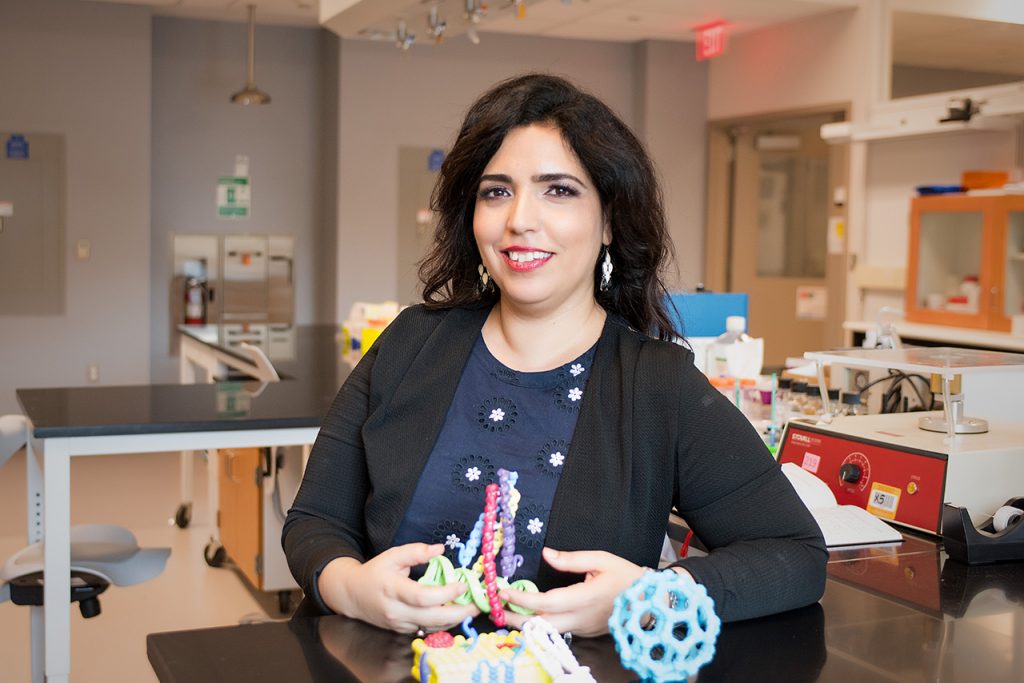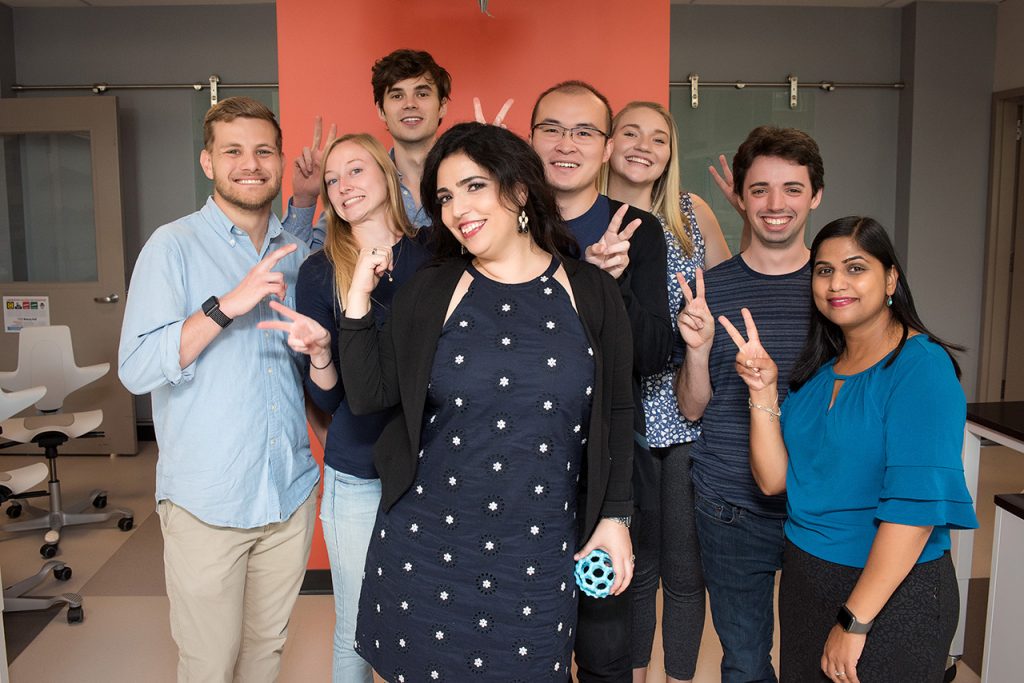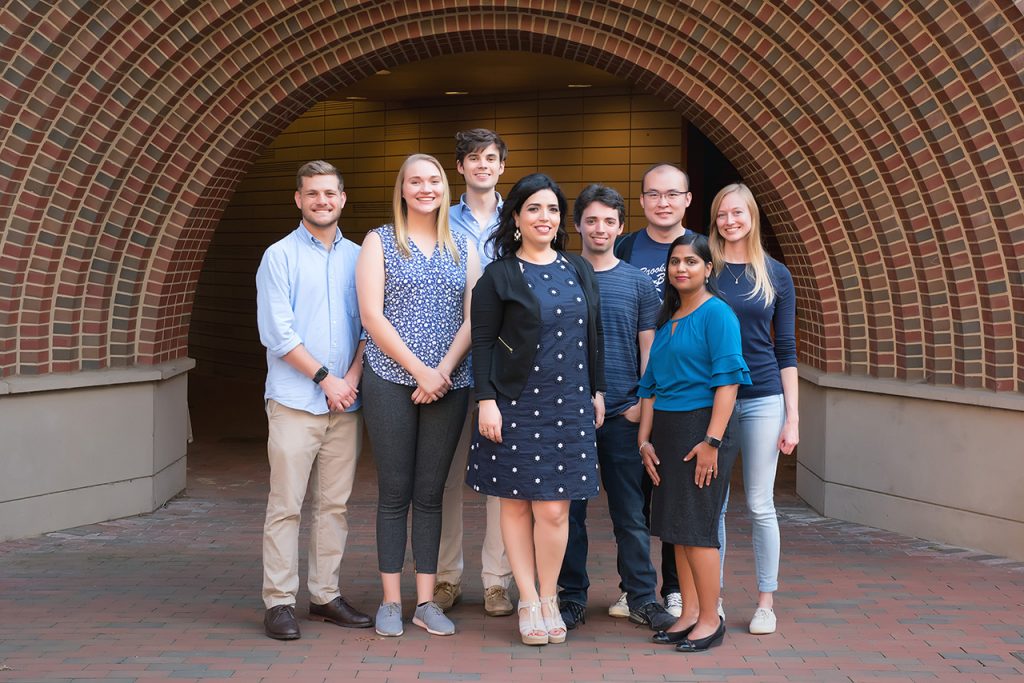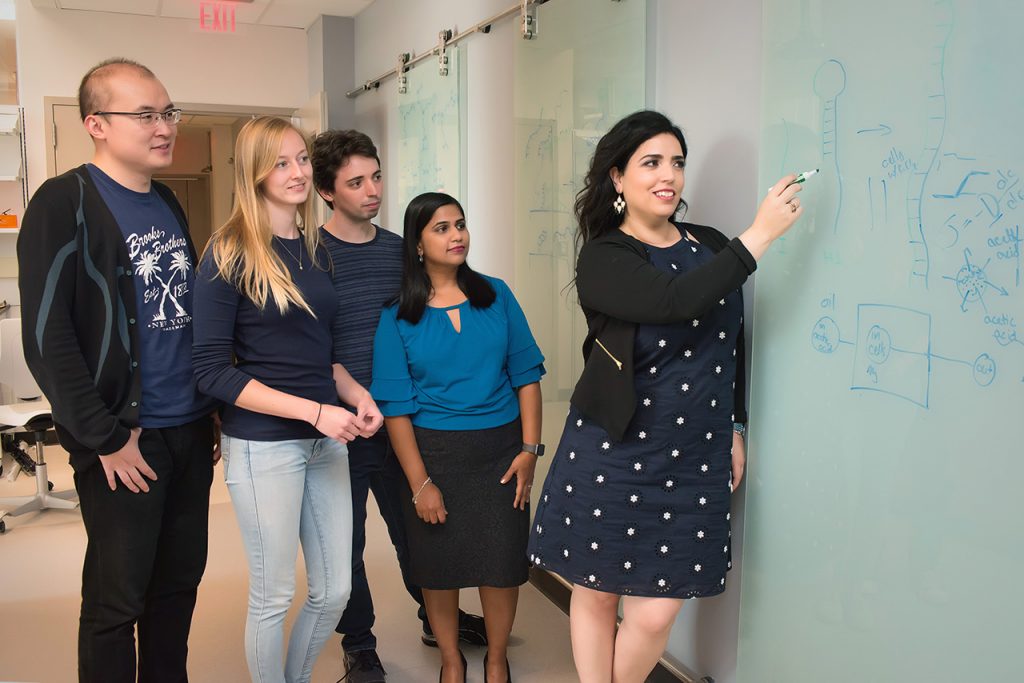
Ronit Freeman
Creating molecules to kickstart healthier outcomes
Ronit Freeman, an associate professor in the UNC Department of Applied Physical Sciences, believes in the power of interdisciplinary endeavors. After all, this scientist, whose academic training crosses the fields of chemistry, computer science, nanotechnology and other fields, is also a talented ballroom dancer who has taught senior citizens to dance. That kind of versatile mindset and approach to life manifests itself in her current research in the field of molecular self-assembly. In her lab, Freeman works with others across many scientific fields to design complex molecular structures that have the potential to improve medical therapies and the body's own healing process.
Q & A
Tell us a little bit about yourself and your research – what problems are you investigating and trying to solve?
My training in various disciplines including chemistry, computer science, nanotechnology and regenerative medicine drives me to investigate problems whose solution are beyond the scope of a single area of research practice.
I work in an area called molecular self-assembly, creating molecules programmed with instructions that allow them to join together into complex structures with a specific shape. These structures are designed to mimic the natural environment that normally surrounds cells. Can we inject the nanomolecules into the bloodstream so they could serve as microscopic vehicles to deliver therapeutic compounds? Could we modify the materials so that they would attract the body’s own healing compounds to an injured area to kickstart the repair process? These are a few of the questions we are trying to solve.
The potential of that process is breathtaking. One day, the specialized molecules we are creating – DNA-Peptide hybrids and macroscopic scaffolds – could repair injuries and regenerate organs. Success would mean better lives for countless patients.
How are you taking an entrepreneurial approach to your research – and how does that approach amplify the problem-solving capacity of your work?
My entrepreneurial approach to the research focuses on the problem – we identify a problem and frame it as a question that can be investigated using available scientific techniques. Problem definition means engaging multiple stakeholders, studying the economics of the relevant industry, talking to potential customers and consulting with leading scientists. It also requires talking with funding agencies, fellow professionals and end users in order to understand each group’s needs. I then work to mobilize a network of people and resources needed to convert that problem into an opportunity.
We are in discussions of founding a startup to commercialize the lab’s discoveries. The potential of spinning off my research forces me to think more broadly and creatively, and to solve technical issues that would not necessarily emerge within a smaller-scale lab environment. It also helps to hone my presentation and negotiating skills, and ability to manage multiple teams and limited time and resources. I hope that such hands-on experience can open new doors and help secure industry funding and additional collaborators.
How have you built your team, and what role has working across disciplines or working with outside partners played?
When trying to solve problems such as how to regenerate tissues and organs, you cannot do it without interdisciplinary research. So, my lab boasts chemists, engineers, biologists, nanotechnologists, as well as materials scientists. Since arriving to UNC earlier this year, I forged partnerships with clinician-scientists and surgeons. They understand very clearly what the problems are to be solved and how we can test it with the materials we are proposing.
Another successful partnership is with applied mathematicians who can model our systems and provide insights to the design rules and big data analysis of our experiments. Working with these different partners and diverse team members can be challenging – each use a different scientific language, with different terms. To do this effectively, you need to understand how they think about the problem and take the time to listen.
Why are resources on campus have helped you on your innovation journey – and why?
UNC is a catalyst for innovation. From the moment I joined I received enormous support. I was invited to attend a faculty entrepreneurship workshop which allowed me to meet other faculty members who are successful entrepreneurs and hear about their journey. The University is instrumental in broadening my network to include experts that aid in cultivating my ideas from conception through implementation and beyond.
Innovation involves not just the development of a single idea in the laboratory but also the strategic positioning of ideas in the larger world. The UNC campus understands that and works to promote mine and others’ inventions through a variety of channels – securing strong patents, highlighting key findings, features in newsletters and websites – which ensure the ideas and designs are accessible to multiple audiences. Working at a university, I have access to equipment, space and expertise while developing my ideas. The technology transfer offices are on hand to provide business advice which is invaluable.
What’s been your biggest challenge in getting your idea off the ground?
The biggest challenge is trying to wear too many hats at the same time. At the beginning you are trying to do everything yourself, but you quickly understand it doesn’t work. I knew that I needed to bring in expertise from outside and recruit people alongside myself. Mentorship is also a great way to get access to skills and advice. I am lucky to have several mentors here at UNC that are extremely valuable in providing independent opinion as well as challenging me.
How do you balance your full-time teaching and research responsibilities with your interest in innovation and entrepreneurship?
There is a synergy between teaching, research and entrepreneurship. Research and teaching have allowed me to keep abreast of the most forward-looking results in my field, think more broadly and critically about how to transfer my technology, develop new science that could lead to new business opportunities and identify and recruit new talent. I believe that having an entrepreneurship mindset enhances my skills in education. I can bring in my own experiences, and I feel sharing these with my students influences them to think about innovation and entrepreneurship as career paths.
What advice would you give to other faculty members who want to hone their own entrepreneurial skills and put them into action?
Innovation requires fostering a positive environment for learning and creativity. Encourage your team to work imaginatively, to improvise and try unconventional approaches to problem-solving, and then get out of their way. Never be shy to ask for help and most importantly value failure! Even failed ideas can serendipitously turn into better ones. View failure as the ultimate educator!

 | UNC-CH
| UNC-CH



